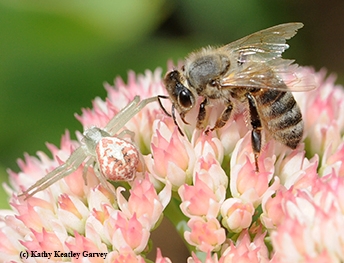
That includes crab spiders that sprawl atop a flower, flatten themselves, and wait, oh, so patiently, for dinner.
We've seen them nab green bottle flies, sweat bees and honey bees.
They pounce, inject a killer venom, and dinner is served.
Often the crab spider's catch results in uninvited guests for dinner. "Freeloader flies"-- family Milichiidae--come out of nowhere and share in the bounty. Let's eat! No reservations, no check, no tip.
No worries.
Spiders are fascinating critters. We all know that spiders are arachnids, not insects. Spiders have eight legs, while insects have six. Spiders are found on every continent except Antarctica. And they've been around a long, long time. Wikipedia says: "True spiders have been found in Carboniferous rocks from 318 to 299 million years ago, and are very similar to the most primitive surviving suborder, the Mesothelae. The main groups of modern spiders, Mygalomorphae and Araneomorphae, first appeared in the Triassic period, before 200 million years ago."
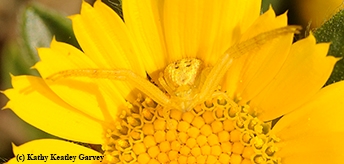
What's really interesting about crab spiders is that they can change colors to camouflage themselves. I've seen yellow spiders on Gold Coin (Asteriscus maritimus), and multi-colored (pink and white) crab spiders on Sedum.
Floral visitors beware!
People with an abnormal fear of spiders--arachnophobia--shouldn't fear crab spiders. They're not aggressive toward humans. Their bite is venomous to their prey, but not harmful to us.
Watching them eat, however, can be a little disturbing....especially when they're eating a honey bee. Please don't eat the pollinators!
Attached Images:
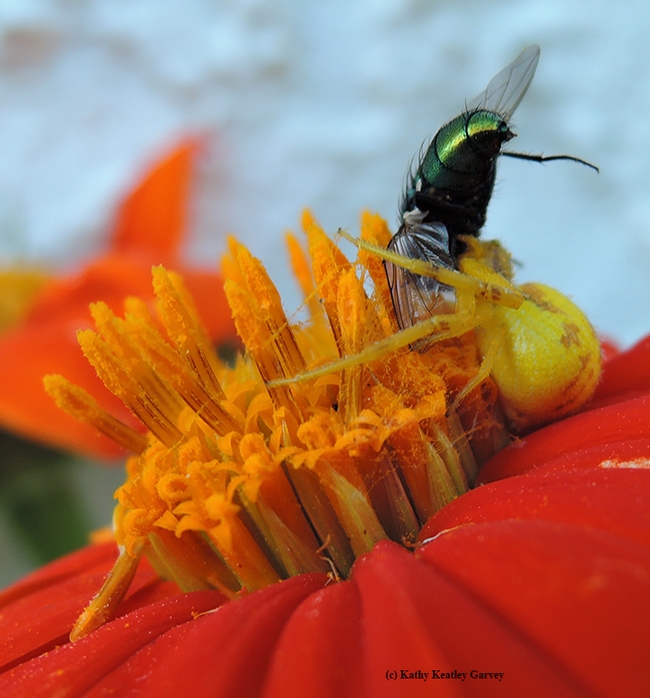
A crab spider, on a Mexican sunflower, eating a green bottle fly. (Photo by Kathy Keatley Garvey)
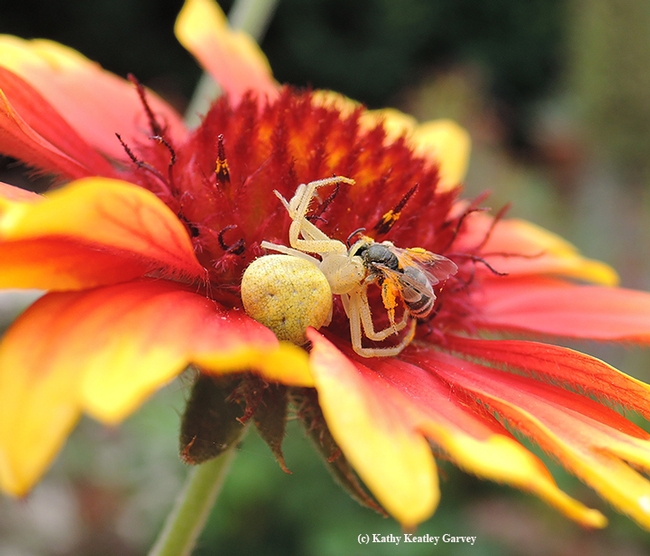
A crab spider, on a blanketflower, eating a female Halictus tripartitus, as identified by Robbin Thorp, UC Davis distinguished professor of entomology. (Photo by Kathy Keatley Garvey)
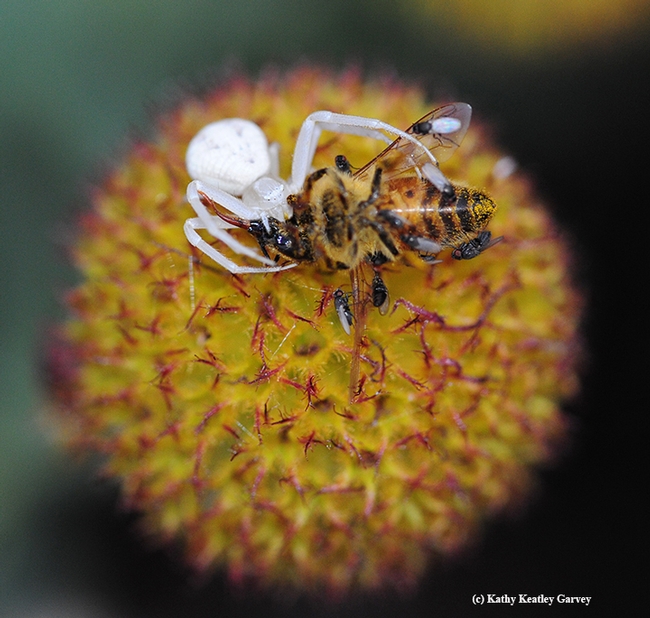
A crab spider, on a spent blanketflower (Gaillardia) eating a honey bee. It is joined by "freeloader flies," family Milichildae. (Photo by Kathy Keatley Garvey)